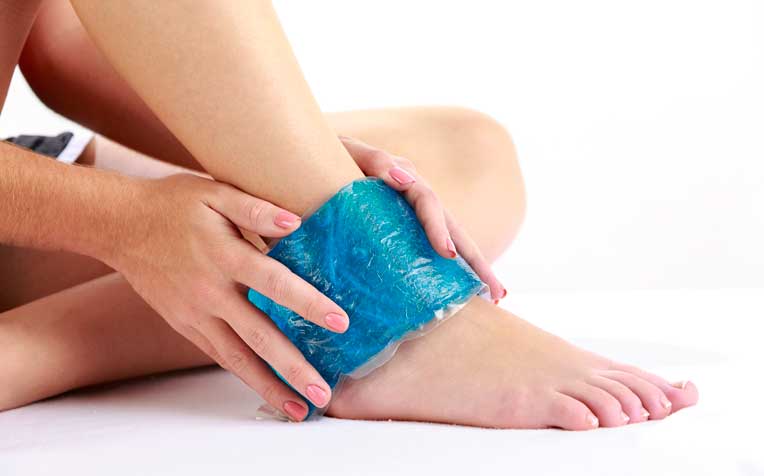
Achilles tendinopathy (or Achilles tendon pain) can be relieved by placing an ice pack over the tendon or area of pain to reduce inflammation.
Achilles tendinopathy describes an overuse condition of the Achilles tendon which may involve pain, swelling and impaired performance.
Diagnosis of Achilles tendinopathy (achilles tendon pain)
The diagnosis of Achilles tendinopathy (Achilles tendon pain) is derived from a combination of one’s history, a physical examination and imaging tests may be required.
History: This may include information on an individual’s participation in recreational sports during the weekends (commonly termed a "weekend warrior"), changes in training intensity or duration, and also complaints of pain around the back of the ankle.
Physical examination: This may reveal tenderness over the back of ankle and some swelling at the back of the heel may be noticeable. Weakness of the calf muscle may also be observed.
Imaging tests: These may be used to confirm the diagnosis but they are not always necessary. An ultrasound scan is most commonly used as it is fast and less costly. It would be able to show any tendon movement, related damage and inflammation. A magnetic resonance imaging scan (more commonly known as an MRI scan) is usually a second line of testing and is useful for classifying the stage of the tendinopathy. It is also useful for diagnosing tears in the tendon. An X-ray may not be particularly helpful in identifying an Achilles tendinopathy but it may help to rule out other diagnoses.
It is advisable for you to see a professional doctor who would be able to rule out any other conditions and to on-refer to the appropriate care needed. It would be best to identify the condition for early treatment and to correct the predisposing factors.
Types of treatment
A multimodal approach of treatment is useful in the management of Achilles tendinopathy (Achilles tendon pain). This may include rest, ice, pain medications if necessary, and also rehabilitation to help you return to pre-injury level of activity.
Rest: Choose alternative forms of exercises that allow you to take the load off the Achilles tendon, such as swimming or cycling.
Ice therapy: Simple pain relief is achievable by applying ice over the tendon or area of pain for a duration of 15 to 20 minutes, three to five times a day or after exercise.
Pain medication: As well as anti-inflammatories may be taken as prescribed by doctors.
Rehabilitation: The main aim of this is to identify the causes of the Achilles tendinopathy and its management may include improving movement in the joint, some stretches and a strengthening programme. It is important to note that an appropriate amount, type and intensity of exercise would be essential in the rehabilitation process.
Thus, a graduated programme to return to the desired level of activity pre-injury status is recommended. A physiotherapist would be able to identify and prescribe exercises to assist in your progress.
Ref: Q15
Check out other articles on foot conditions:
Flat Foot / Flat Feet: Treatment and Tips
Guide to Treating Ankle Sprains
Heel Pain (Plantar Fasciitis): Treatment and Remedies
Contributed by
















 Get it on Google Play
Get it on Google Play